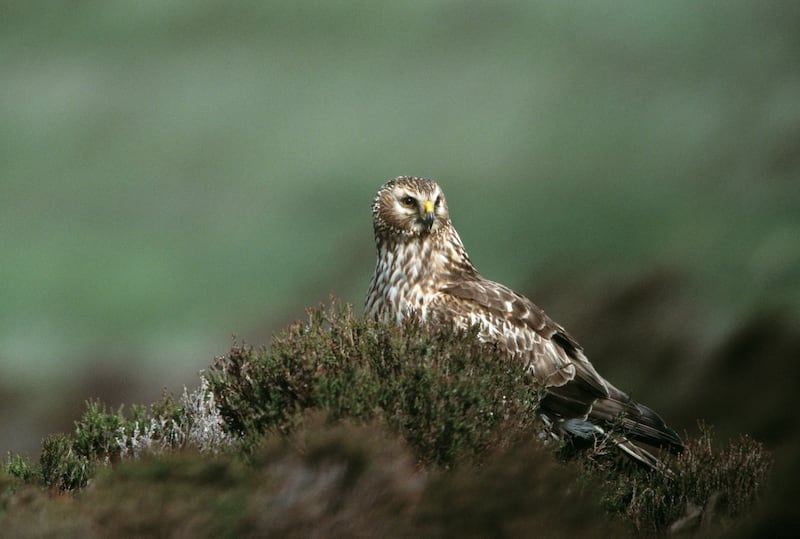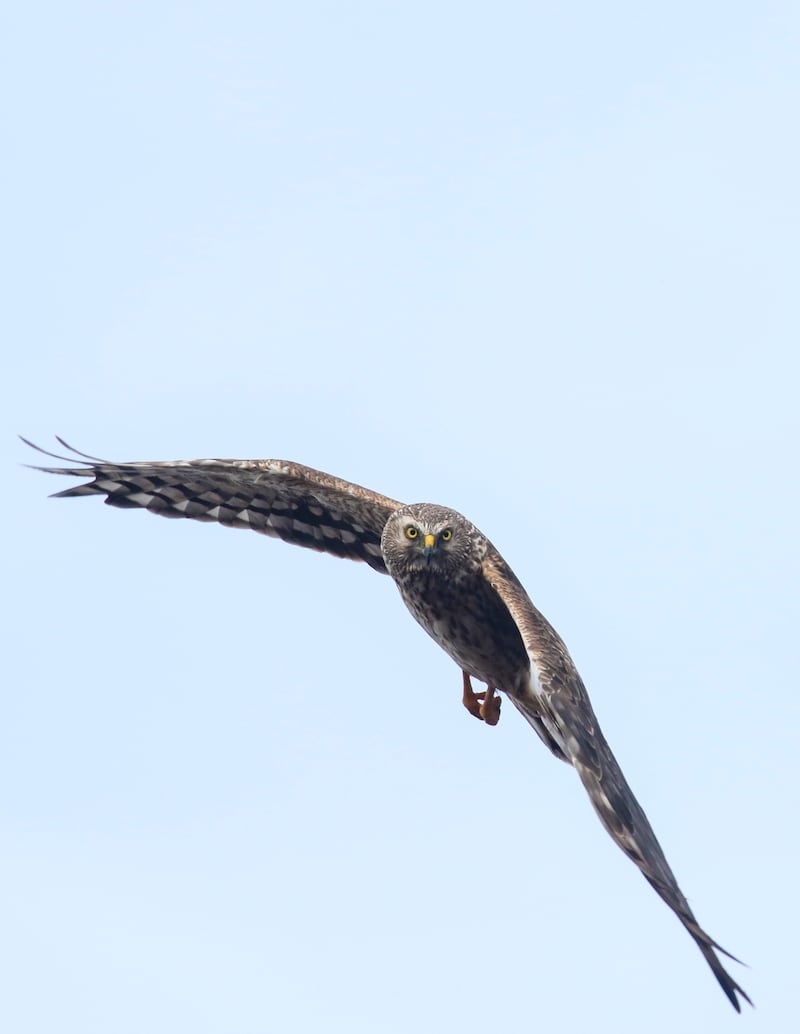Concerns have been raised after the hen harrier population in Northern Ireland was found to have dropped by more than a quarter.
Last year’s hen harrier survey recorded only 34 territorial pairs in the region, down more than 26 per cent since 2016′s survey.
The study was conducted in partnership with the Royal Society for the Protection of Birds Northern Ireland (RSPBNI), Northern Ireland Raptor Study Group (NIRSG) and the department of agriculture, environment and rural affairs, as well as a team of volunteers, in an attempt to understand more about the numbers and distribution of the rare species.
A 2011 independent government report had previously estimated that there should be around 150 pairs of hen harriers breeding in Northern Ireland.
READ MORE

The NIRSG has described the North’s hen harrier population as being under immense pressure from a range of land management activities and human-mediated threats. The group said this has led to extensive and ongoing losses of suitable habitats and widespread disturbances at nesting and foraging habitats.
Gregory Woulahan, operations director at RSPBNI, said the drop represented a “drastic decline”.
“Unfortunately, this recent decline mirrors a similar population decrease within the Republic of Ireland in 2022,” he said, adding that hen harriers and their habitats need greater protections.
Mr Woulahan said support should be offered with a view to retaining valuable and biodiverse scrub and heather habitats across upland areas.
“There needs to be landscape-scale restoration of peatlands and habitats for this species and its prey,” he said. “The devastating effects of wildfire and inappropriate land management needs reversed through robust policy and support for landowners, and wider awareness amongst the public to minimise disturbing activities.
“Whilst some population increases were recorded by the survey results in other parts of the UK, Northern Ireland and the Republic of Ireland have both exhibited substantial declines since the last surveys.”
Stormont’s minister for rural affairs Andrew Muir said landowners, farmers and other stakeholders must work in partnership to address the concerning situation.

“Action needs to be taken to stop the decline of this iconic bird, but it can only be achieved through working in partnership with landowners, farmers, non-governmental organisations and all other stakeholders, to restore and enhance breeding habitats and appropriately manage activities which have the potential to cause disturbance and displacement,” he said.
“While the overall picture is not encouraging, I am pleased the survey showed that the number of hen harriers within the two designated special protection areas, approximately half of the population, remained relatively stable since the 2016 census.”
The public have been asked to report any dead or injured birds of prey in suspicious circumstances that they see to police. Anyone with information about people killing birds of prey can be reported anonymously to Crimestoppers. – PA













